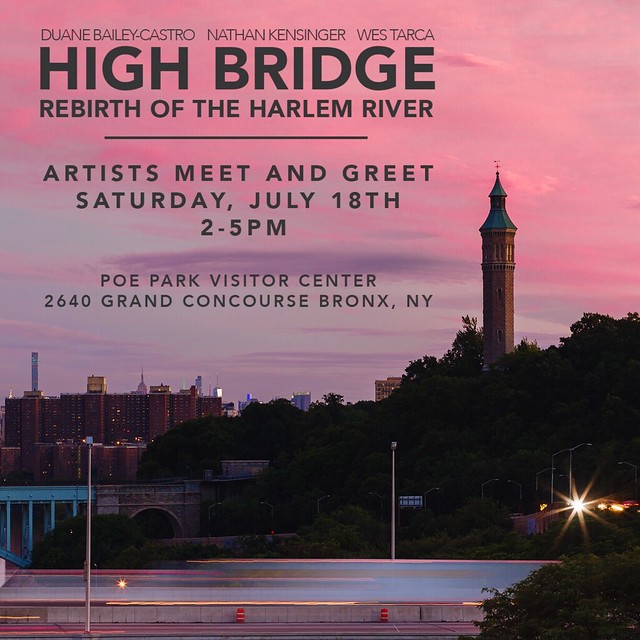There are very few roads that lead to Bloomfield, a quiet industrial neighborhood on Staten Island's northwest coast. Much of the neighborhood has been demapped and fenced-off by miles of razor wire, leaving its interior a vast forbidden zone, its desolate streets patrolled by a private security force. Bloomfield's remaining roads are poorly maintained dumping grounds, prone to flooding from bordering marshlands. They are lined with abandoned lots filled with mattresses, toys, living room sets, empty trailers, a beached jet ski. A hot tub sits in the middle of an unused road near an abandoned chocolate factory. A boat graveyard is hidden off a dead-end road overgrown with dense foliage. The profound isolation of Bloomfield has created a fertile breeding ground for a mix of strange uses. Its recent history includes the intersection of dead bodies, oil tanks, mafia extortion and NASCAR.
Bloomfield's landscape is a microcosm of Staten Island's conflicted relationship to its post-industrial waterfront. Like nearby
Fresh Kills, which is located further south on the Arthur Kill, Bloomfield's marshlands and wilderness survive next door to toxic storage systems, and its wetlands are tainted by the aftermath of devastating pollution. The demapped dead-zone at the heart of Bloomfield was once the GATX tanker field, "a 414-acre oil tank farm," according to the
Chicago Tribune, which contained "81 above-ground tanks with a capacity to hold 218 million gallons of petroleum products."
Oil spills were common and in 1992 GATX agreed to "undertake a $6 million cleanup and repair program at the tank farm." The oil tanks were demolished shortly thereafter and "the lot has remained vacant since GATX Corp. stopped using it as an oil storage tank farm in 1998," according to
Scene Daily. The cleanup of the tanker field is ongoing and includes a plan to spread nearly 5 million cubic yards of fill across 234 polluted acres, according to a 2011 New York State Department of Environmental Conservation
document. For now, a surreal landscape of
ghost roads and concrete crop-circles is all that has been left behind.

Ghost Road in the Dead Zone

Abandoned Guard Booth
Over the years, Bloomfield's much-abused marshlands have also been a dumping ground for murder victims. In 1942, a "19-year-old war plant worker was found... in a field at Bloomfield," according to the
NY Times, her death "caused by fracture of skull as if by hammer blow." In 1998, "the body of a man killed by a gunshot to the neck" was found in a Bloomfield marsh, according to the
NY Times, "wrapped in a blanket and set on fire." Along the dead-end road leading to Bloomfield's power plant, an empty hole that resembles a shallow grave can be found behind a dump site. A piece of pink carpet lies in the bottom of the human-sized hole.
Like the infamous mob burial ground on the Brooklyn/Queens border named
The Hole, Bloomfield has been closely linked to Mafia activity. The family of Sammy "The Bull" Gravano, a prominent member of the Gambino crime family who later became an FBI informant, once lived in Bloomfield, according to the
NY Times. And in 2008, a multi-count indictment highlighted "the Gambinos' stranglehold on Staten Island," according to the
Staten Island Advance. The indictment chronicled "a slew of crimes over three decades, including murder, theft of union benefits and extortion at the site in Bloomfield where NASCAR proposed to put an 80,000-seat racetrack."
Dumping Grove

Empty Hole
The plan to bring NASCAR to New York City was formulated in 2004 by the International Speedway Corporation (ISC), which proposed to build a 3/4 mile track on top of the old GATX tanker field. "In 2004, ISC paid $100 million — the single largest private sale ever recorded in the county — to purchase the 450-acre former oil tank farm on the edge of the West Shore Expressway," according to the
Staten Island Advance. "An adjacent 239-acre parcel was purchased for $10 million." Very soon after, in 2006, "ISC pulled up stakes... in the face of mounting opposition."
The project failed for several reasons, including the Gambino's alleged extortion plot at the tanker farm, which involved "control over trucking contracts used to deliver large quantities of dirt fill needed when excavation of the Bloomfield site began in 2006." However, "the real problem," according to the
New York Times, was "the island's relatively primitive road system -- mostly paved-over paths set down centuries ago by American Indians, then used by farmers and other early settlers. The meandering layout makes even simple traffic control measures, like timed stoplights, virtually impossible," and leading politicians and nearby residents to voice "concerns about how the borough’s roadways would handle an influx of cars and fans headed to NASCAR races," according to the
Staten Island Advance.
Bloomfield's remaining handful of narrow, flooded, deserted roads remain relatively empty today. One of the few social hubs in this quiet neighborhood is at the
Staten Island Sportsmen's Club, located across the street from the empty NASCAR/GATX wasteland. Founded in 1936, club members are invited to fire their shotguns throughout the day, blasting clay pigeons from the sky, with no fear of bothering the neighbors. The lure of Bloomfield is simple, according to one club manager. "There's nobody out here. And we like it that way."
---

Bloomfield Meadow

Clay Pigeon

Abandoned Trailer

Lazy Boy Field

Empty Trailer

Cat Food Interior

Squatter Bedroom

Marshland View

Boat Graveyard

Caitlin Rose

Life Preserver

For Sale: "As Is"

Big George Bridge

Tracks into the Marsh

Arthur Kill Shores

Arthur Kill Sunset








